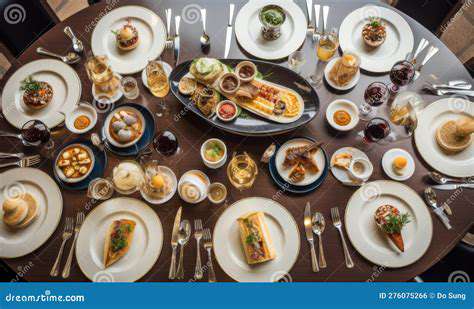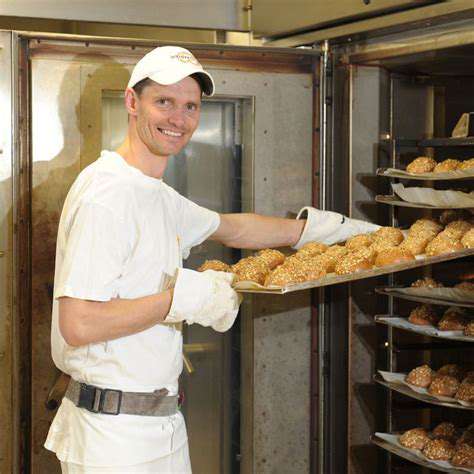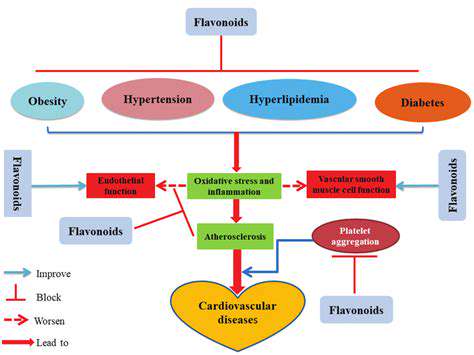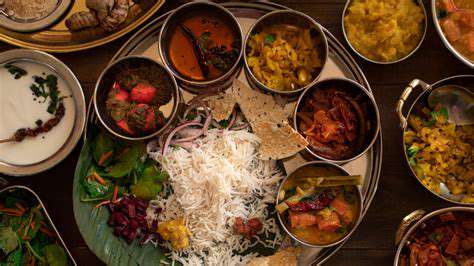The History of Bread: A Staple of Civilization
Ancient Civilizations and the Rise of Leavened Bread
Early Experiments with Leaven
The transition from simple, flatbreads to leavened loaves marked a significant advancement in culinary techniques and, arguably, in societal organization. Early civilizations, particularly those in the Fertile Crescent, likely stumbled upon the magic of leavening by accident. Perhaps a forgotten batch of dough left out in warm conditions, exposed to wild yeasts in the air, experienced a surprising rise. Observing this phenomenon, our ancestors likely experimented, meticulously noting the effects of different temperatures, durations, and ingredients on the dough's transformation. This early experimentation with leavened bread was a crucial step in the development of more complex food preparation methods and potentially even influenced the development of agriculture and storage techniques.
The discovery and refinement of leavening agents, be they naturally occurring yeasts or later, more controlled methods, represented a pivotal moment in human history. This innovation not only improved the taste and texture of bread but also contributed significantly to its nutritional value. Leavened bread, with its airy structure, offered a more palatable and digestible source of carbohydrates compared to its flatbread predecessors. This advancement in food preparation likely played a role in population growth and the development of more settled agricultural communities.
The Role of Leaven in Ancient Societies
The development of leavened bread wasn't simply a culinary advancement; it likely held significant social and cultural implications within ancient societies. Different civilizations likely developed their own unique leavening techniques, reflecting their specific environments and available resources. For instance, cultures bordering rivers or with access to abundant fruits might have employed different fermentation processes than those in drier, more mountainous regions. These variations in bread-making practices could have become markers of cultural identity, and their use in rituals and celebrations may have been common. Leavened bread's increased nutritional value might have also played a role in the growth and stability of these communities, providing a more reliable and nutritious food source.
Furthermore, the production and distribution of leavened bread could have influenced social structures and economic activities. The need for specialized knowledge and labor in the preparation of leavened bread could have led to the development of specific roles within the community, potentially contributing to the rise of artisans and specialists. The availability and accessibility of leavened bread, in turn, may have influenced trade routes and economic interactions between different groups. The history of leavened bread is intrinsically linked to the history of human civilization itself.
Bread Through the Ages: From Medieval Europe to Modern Times
Early Bread in Medieval Europe
The history of bread in medieval Europe is intertwined with the very fabric of daily life. From humble beginnings, bread, often made from coarse grains like barley and rye, was a staple food source for the majority of the population. The methods of production were largely rudimentary, relying on traditional techniques passed down through generations. This simple, yet essential, food was not just sustenance; it was a symbol of community and a testament to human ingenuity in the face of limited resources. The quality and availability of bread often dictated the economic and social standing of individuals and families within the medieval social hierarchy.
The Rise of the Baker's Craft
As populations grew and trade routes expanded, the craft of baking evolved. Specialized bakers emerged, developing techniques to create more varied and palatable loaves. This evolution wasn't solely about taste; improved methods also meant greater efficiency in production, leading to a more consistent supply of bread for the burgeoning cities. The introduction of new ingredients and techniques, though slow, marked a significant change in the way bread was perceived and produced, slowly shifting from a simple necessity to a more refined culinary art.
The Influence of the Renaissance and Beyond
The Renaissance period brought about a renewed interest in the arts and sciences, impacting even the humble loaf of bread. New baking techniques and recipes were documented and disseminated, leading to a more sophisticated approach to bread making. The exchange of ideas and ingredients across borders further enriched the culinary landscape. The growing availability of imported ingredients, like spices and flours from across the globe, opened doors for innovative flavors and textures in bread, marking a significant turning point in the history of bread making.
Industrialization and Mass Production
The Industrial Revolution dramatically altered the bread-making landscape. Mechanization of processes allowed for the mass production of bread, making it more affordable and accessible to a wider segment of the population. This shift, while streamlining production, also led to a standardization of recipes and a potential loss of traditional regional variations and flavors. The rise of large-scale bakeries and the introduction of commercialized ingredients were defining features of this era in bread making, impacting both the production and consumption of this fundamental food.
Bread in Modern Culinary Innovation
In modern times, bread has become a canvas for culinary innovation. From artisan bakers crafting unique and flavorful sourdough loaves to chefs incorporating bread into creative dishes, the possibilities are endless. The focus on quality ingredients and traditional techniques has renewed interest in handcrafted breads. Modern consumers appreciate the nuances of different flours, leavening agents, and shaping methods. This emphasis on quality and flavor has elevated bread from a simple staple to a gourmet ingredient in many contemporary cuisines.
Global Bread Variations and Cultural Significance
Bread's journey transcends geographical boundaries. From the baguettes of France to the flatbreads of the Middle East and beyond, the cultural significance of bread varies widely. Each region has its own unique traditions, recipes, and methods of preparation, reflecting the diverse culinary heritage of the world. The variations in ingredients, textures, and flavors showcase the deep-seated cultural ties that bread has with communities worldwide. These diverse variations illustrate the enduring legacy of bread as a fundamental part of human civilization.
Bread's Role in Global Cuisine: Adapting to Diverse Palates
Bread's Ubiquitous Presence in Global Cuisine
Throughout history, bread has been a cornerstone of numerous cultures worldwide. From ancient civilizations to modern societies, its importance as a staple food and a symbol of sustenance is undeniable. Bread's adaptability to diverse ingredients and preparation methods has allowed it to become integral to a vast array of culinary traditions, reflecting the rich tapestry of global tastes and preferences.
Its versatility extends far beyond simple nourishment. Bread is often interwoven with cultural rituals, celebrations, and daily routines. The very act of baking bread can foster community and connection, passing down traditions and recipes from generation to generation.
Ancient Origins and Cultural Significance
The earliest forms of bread likely emerged from simple experiments with fermented grains. This pioneering culinary innovation quickly became intertwined with religious and social practices, playing a vital role in the development of early agricultural societies. In many cultures, bread represented a connection to the earth, the harvest, and the divine.
Different cultures developed unique bread-making techniques, influenced by the availability of local ingredients and their own cultural values. This resulted in a remarkable diversity of breads, each with its own unique flavor profile and texture.
Regional Variations and Culinary Traditions
From the sourdough loaves of France to the flatbreads of the Middle East, the world boasts a stunning array of bread varieties. Each region has developed its own unique culinary traditions surrounding bread, often reflecting the local climate, agricultural resources, and cultural norms.
The diverse ingredients used in bread-making, from whole grains to exotic seeds and herbs, further contribute to the rich tapestry of global bread traditions. This diversity highlights the profound impact of geography and culture on culinary practices.
Adapting to Modern Palates and Diets
Modern bread-making techniques and ingredients continue to evolve, allowing for greater customization to suit diverse dietary needs and preferences. The rise of gluten-free and whole-grain options reflects a growing awareness of health and wellness concerns.
Innovations in bread-making have also led to new and exciting flavor combinations, pushing the boundaries of traditional recipes. This ongoing evolution ensures that bread remains a relevant and exciting food for people worldwide.
Bread's Role in Social Gatherings and Celebrations
Bread often plays a central role in social gatherings and celebrations across cultures. From festive meals to everyday meals, bread is often a part of the social fabric, symbolizing togetherness and shared experience.
The act of sharing bread can foster a sense of community and connection. The preparation and sharing of bread can be a powerful symbol of cultural identity and heritage.
Bread as a Symbol of Sustenance and Community
Bread's enduring presence as a staple food throughout history highlights its profound importance as a symbol of sustenance and community. From ancient civilizations to modern societies, bread has provided nourishment and strengthened social bonds.
The simple act of making and sharing bread fosters a sense of connection and belonging. Bread's versatility and cultural significance ensure its continued presence in the hearts and homes of people worldwide.
The Modern Era: Innovations and Challenges

The Rise of Digital Technology
The 21st century has witnessed an unprecedented surge in digital technology, transforming various aspects of human life. From smartphones to the internet, these advancements have revolutionized communication, entertainment, and even the way we conduct business. This rapid evolution has fundamentally altered the global landscape, creating new opportunities and posing novel challenges for individuals and societies alike.
The integration of digital tools into everyday life has led to a more interconnected world. We can now access information from anywhere in the world instantaneously and communicate with people across continents in real-time. This global connectivity has fostered collaboration and innovation in countless fields, but it has also raised concerns about privacy, security, and the potential for misinformation.
Technological Advancements in Healthcare
Medical breakthroughs have been pivotal in improving human health and longevity. Innovations in medical imaging, such as MRI and CT scans, have revolutionized diagnostic capabilities and enabled earlier detection of diseases. These advancements have also led to the development of more targeted and effective treatments.
The development of sophisticated surgical robots and minimally invasive procedures has significantly reduced recovery times and improved patient outcomes. Furthermore, advances in genetic engineering and personalized medicine hold the promise of even more tailored and effective treatments for a wider range of diseases in the future.
Globalization and Cultural Exchange
Globalization has fostered unprecedented cultural exchange, blurring geographical boundaries and promoting cross-cultural understanding. The ease of travel and communication has allowed individuals to experience different cultures firsthand, broadening perspectives and promoting tolerance. This interconnectedness has also brought about challenges, such as the potential for cultural clashes and the preservation of unique cultural identities.
The exchange of ideas and artistic expression has led to a rich tapestry of creativity and innovation. The fusion of different cultures in music, art, and literature has enriched the global artistic landscape, providing new sources of inspiration and expression.
Sustainable Practices and Environmental Concerns
The modern era has brought with it a heightened awareness of environmental issues. Growing concerns about climate change, pollution, and resource depletion have spurred the development of sustainable practices and technologies. Renewable energy sources, such as solar and wind power, are becoming increasingly important in reducing our reliance on fossil fuels.
Efforts to reduce waste and promote recycling are gaining traction, and innovative solutions are being developed to address issues like plastic pollution and deforestation. The future of the planet depends on our collective ability to adopt sustainable practices and innovate environmentally friendly solutions.
The Impact of Artificial Intelligence
Artificial intelligence (AI) is rapidly transforming various industries, from healthcare and finance to transportation and manufacturing. AI-powered systems are capable of automating tasks, improving efficiency, and generating insights from vast amounts of data. The potential applications of AI are seemingly limitless, and it is already impacting numerous aspects of our daily lives.
While AI offers enormous potential benefits, it also raises ethical concerns about job displacement, bias in algorithms, and the potential for misuse. Careful consideration of these ethical implications will be essential as AI continues to evolve and become more integrated into our society.
Read more about The History of Bread: A Staple of Civilization
Hot Recommendations
- Traditional Foods for Day of the Dead
- Food Etiquette in Italy: Pasta Rules!
- Best Family Friendly Restaurants with Play Areas in [City]
- Review: The Best [Specific Dessert] Place in [City]
- Top Ice Cream Parlors in [City]
- Traditional Foods for Halloween
- The History of the Potato in Ireland
- Best Vegan Pizza Joints in [City] [2025]
- Best Bakeries for Sourdough Bread in [City]
- Food Culture in Argentina: Asado and Wine








![How to Choose Sustainable Seafood [A Quick Guide]](/static/images/28/2025-06/WhySustainableSeafoodMatters.jpg)

